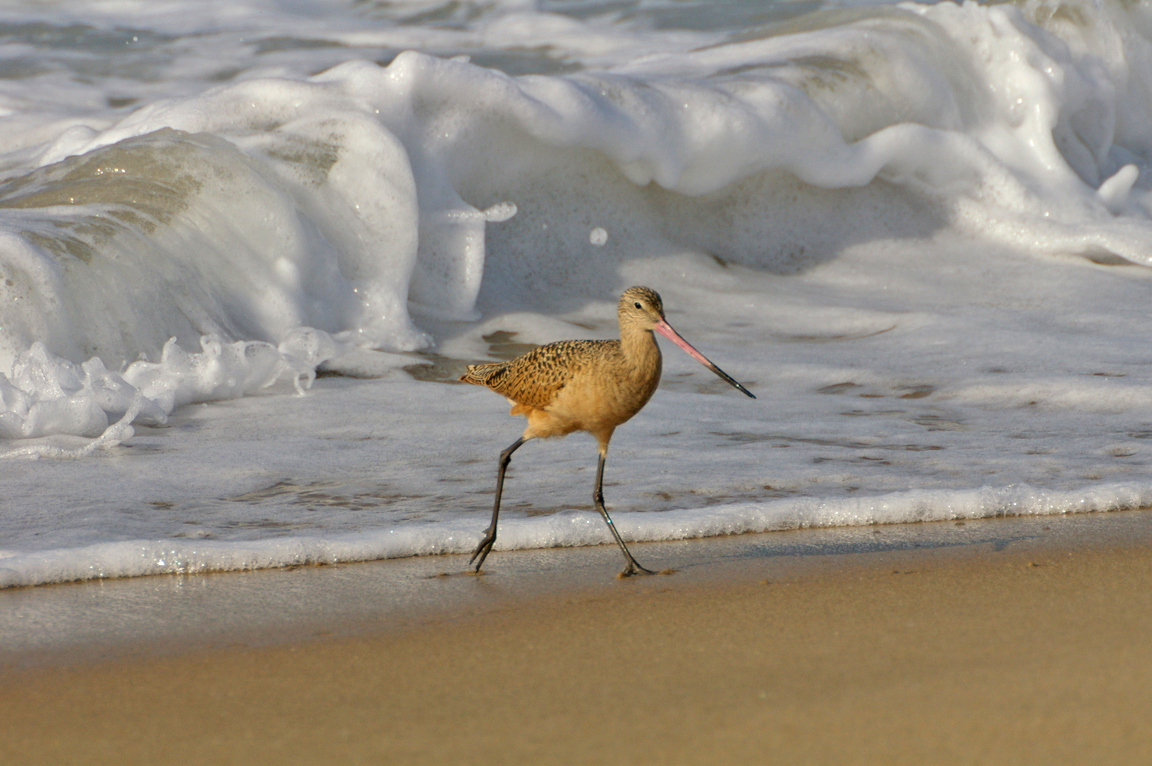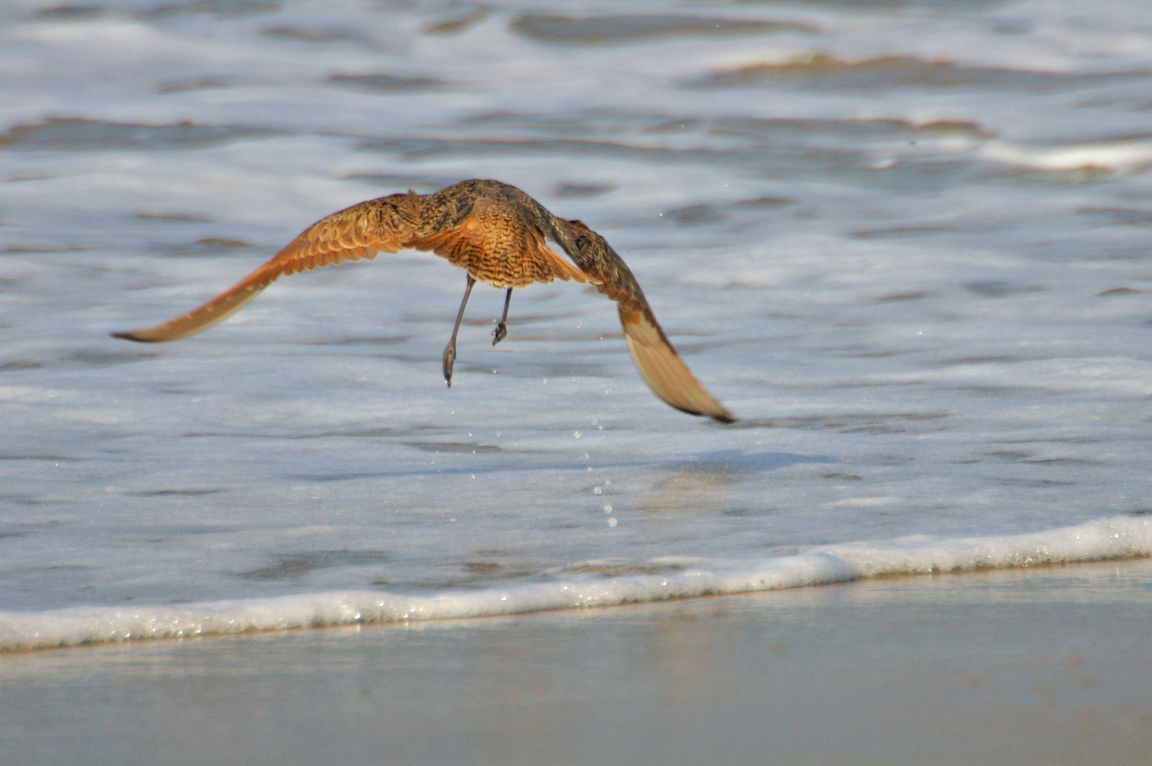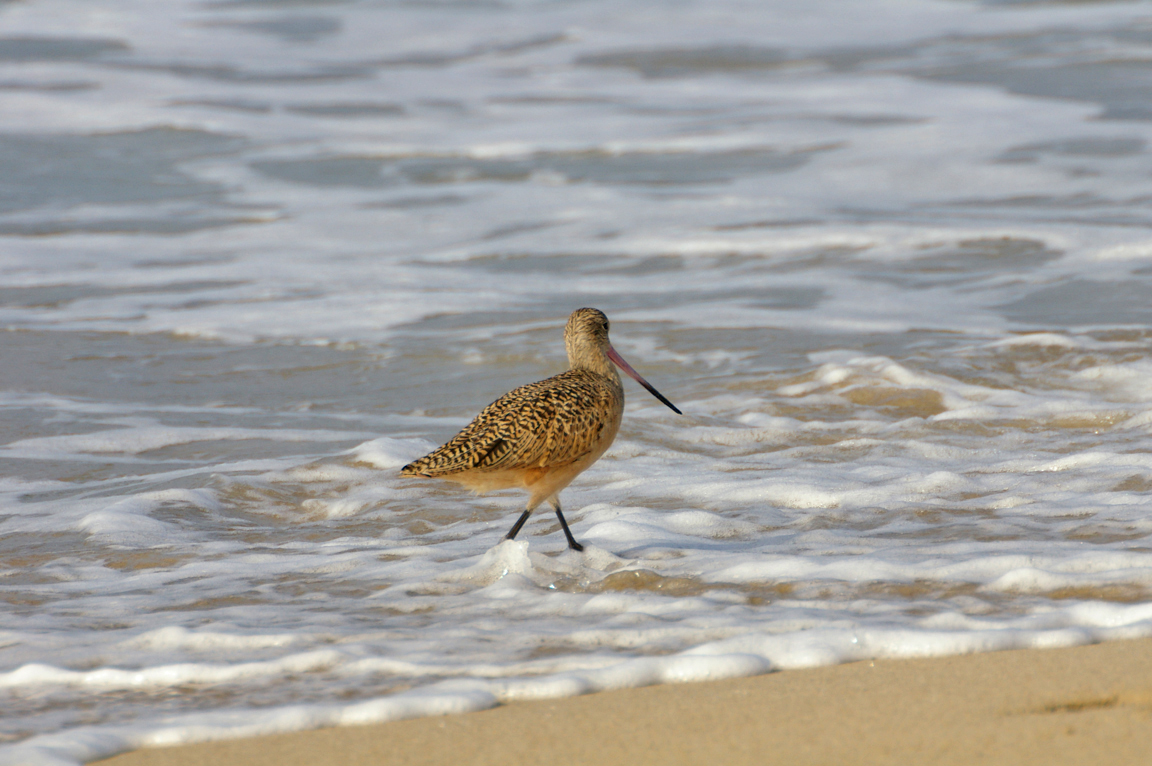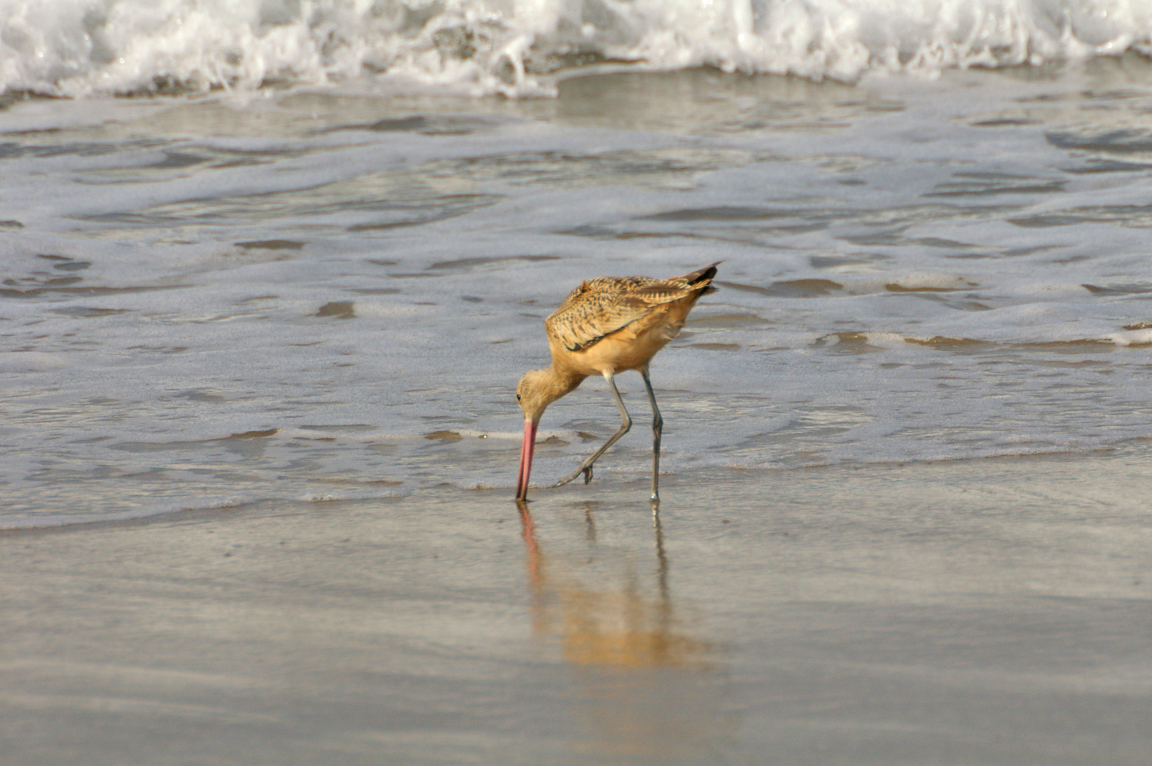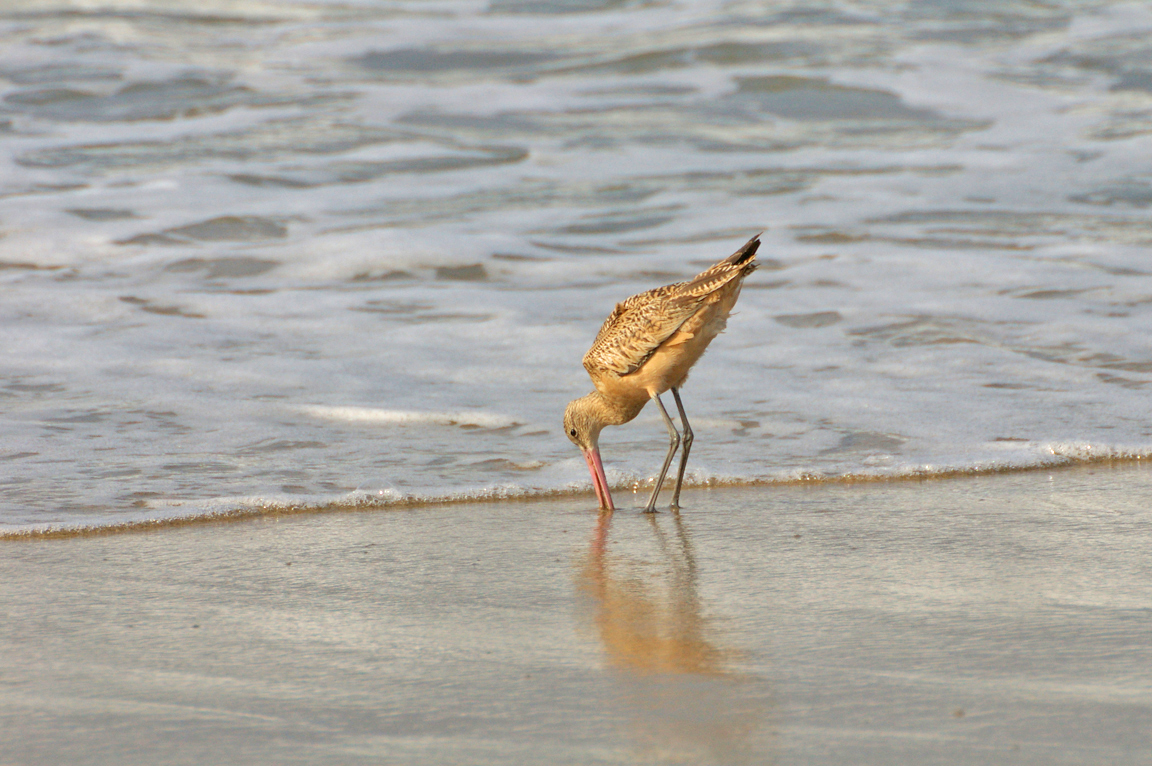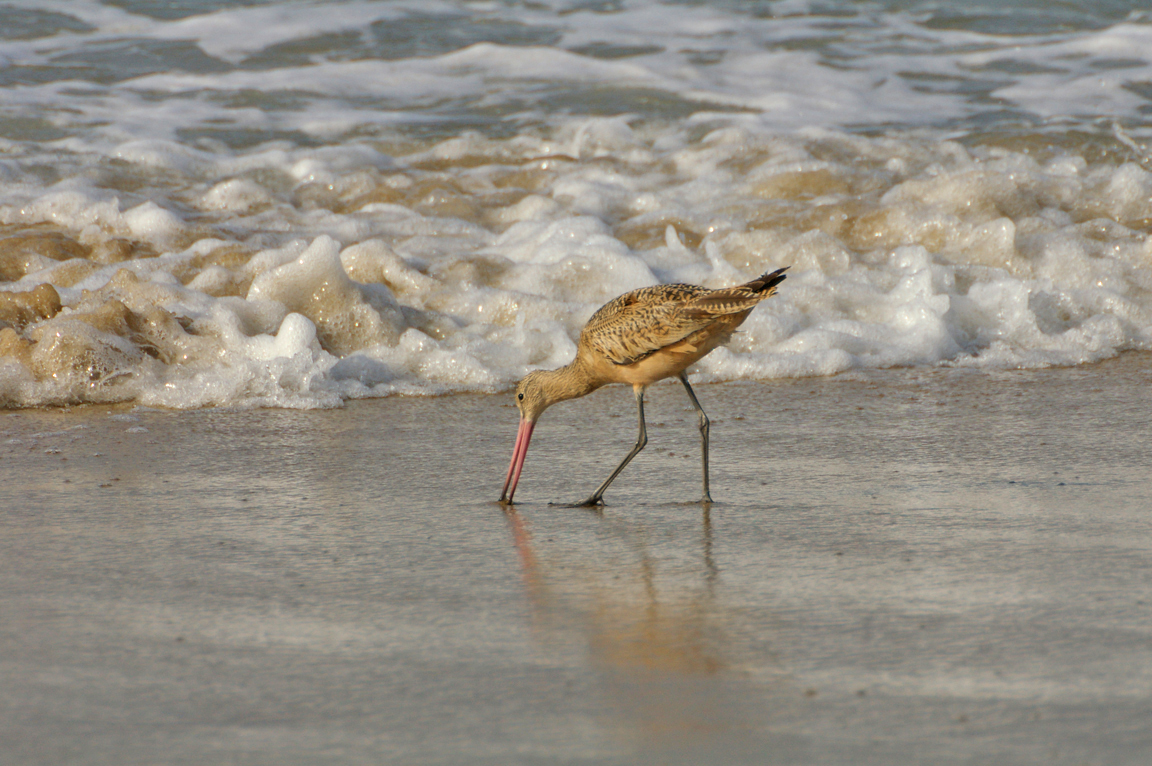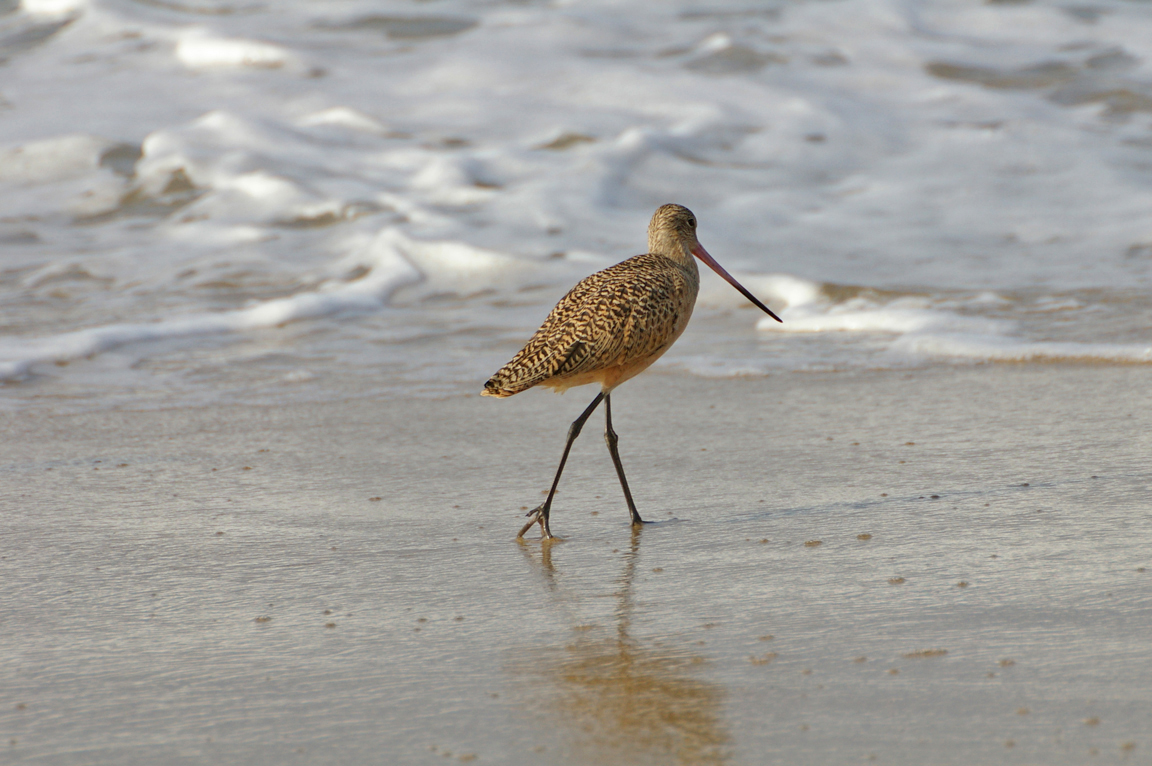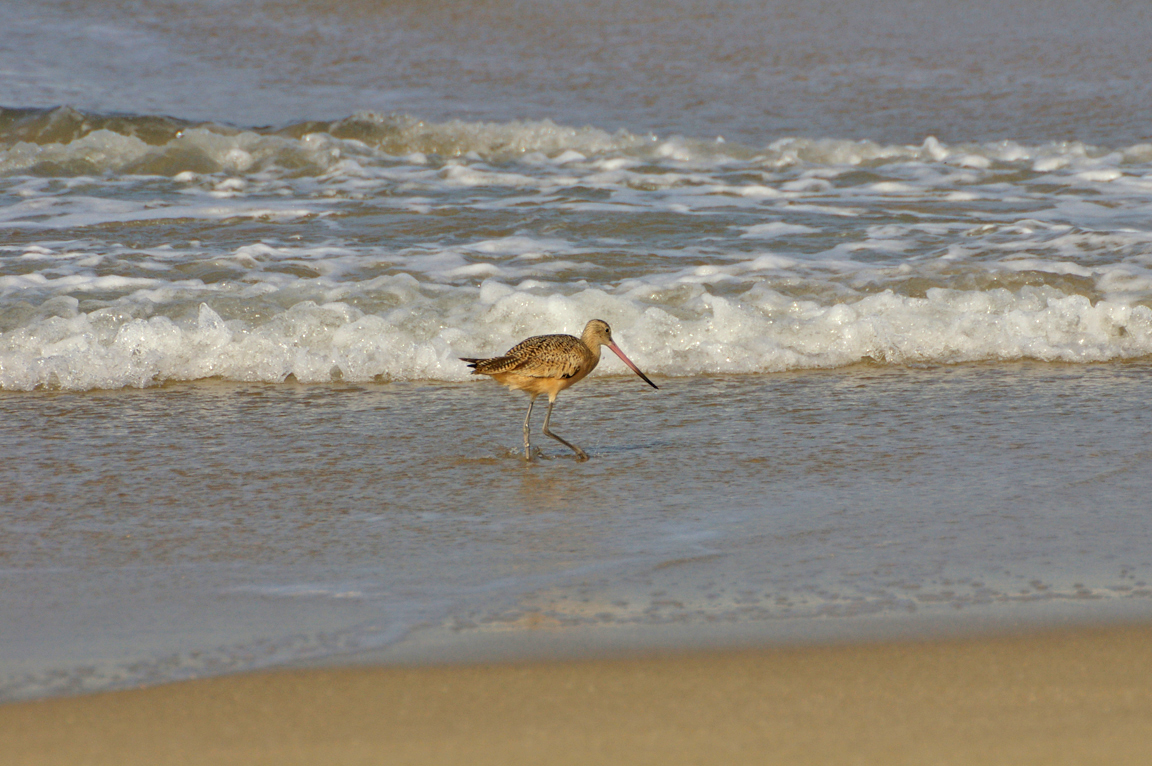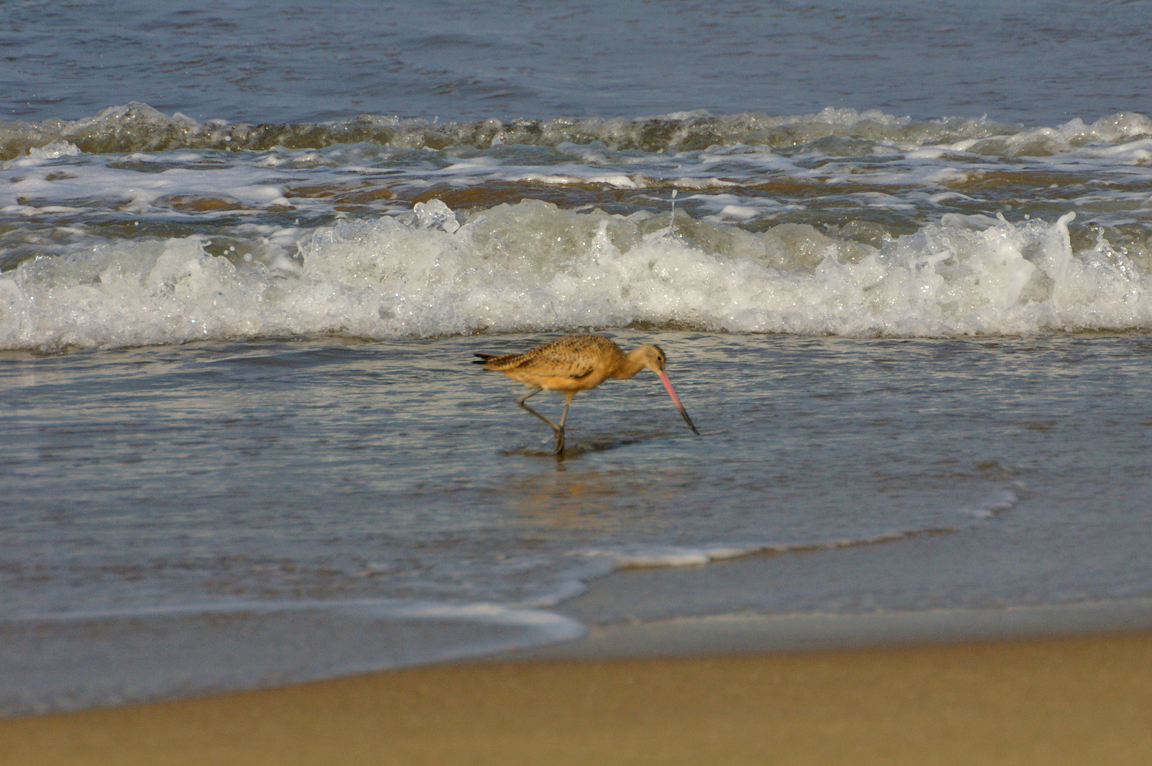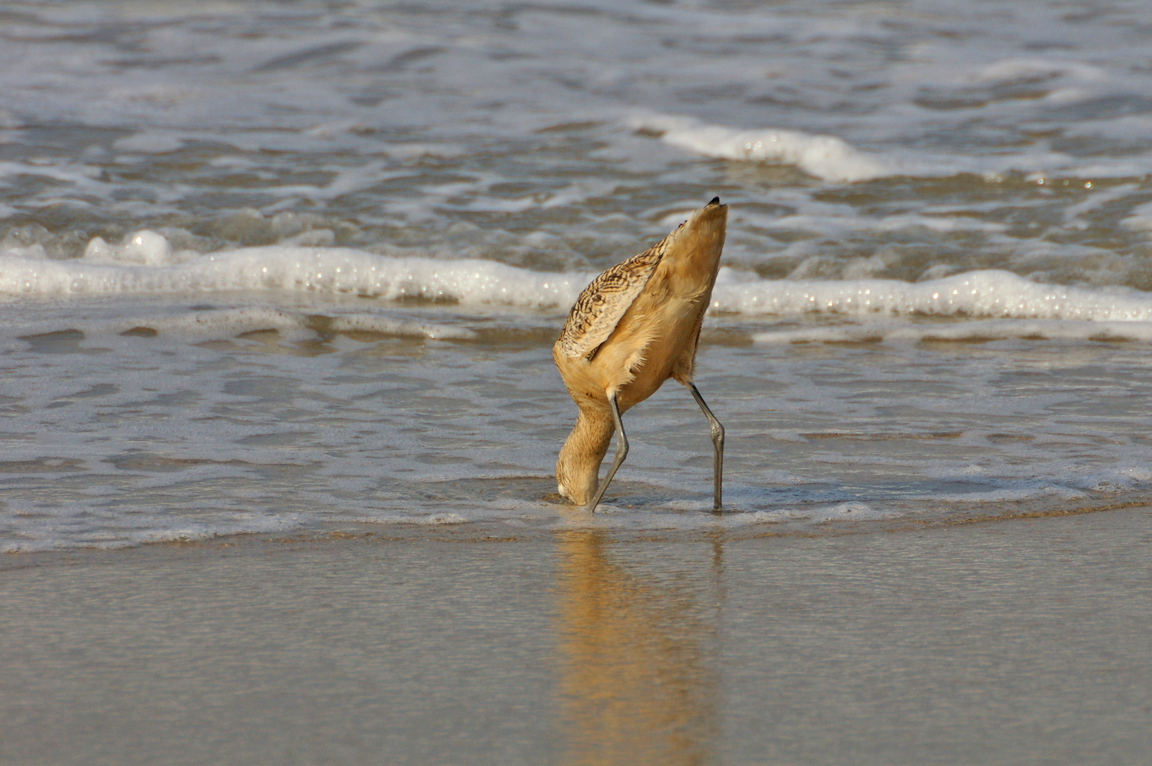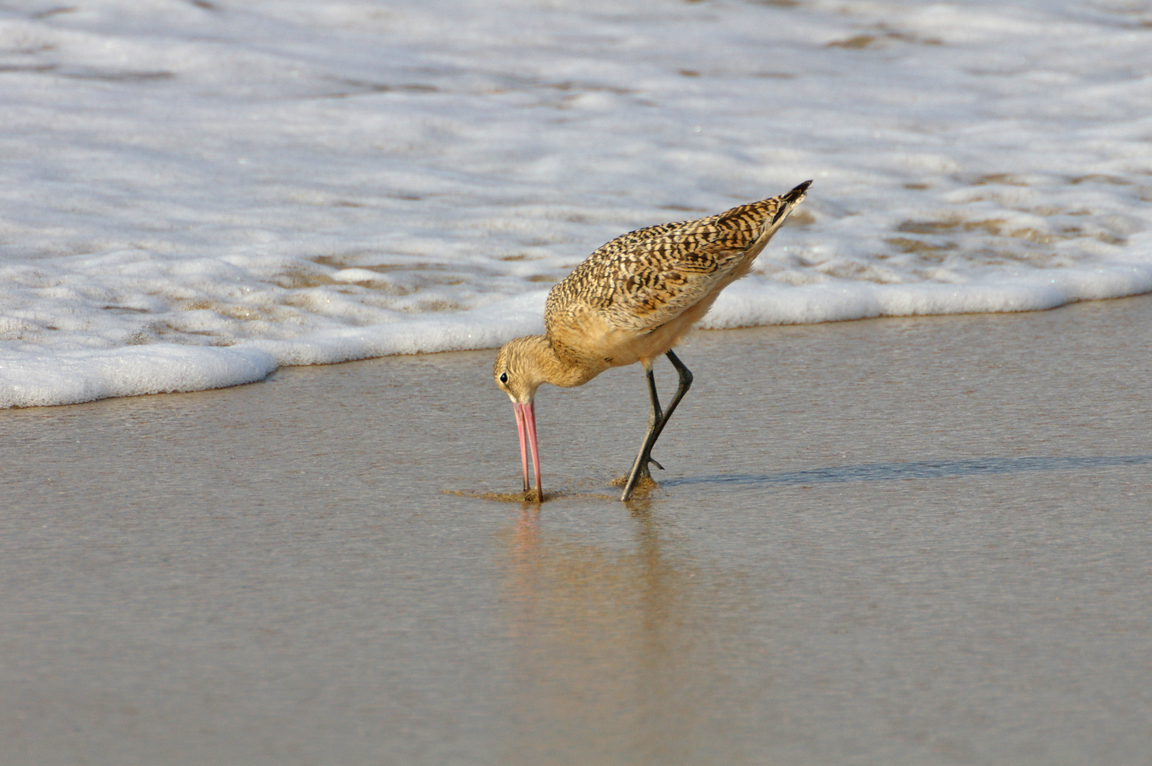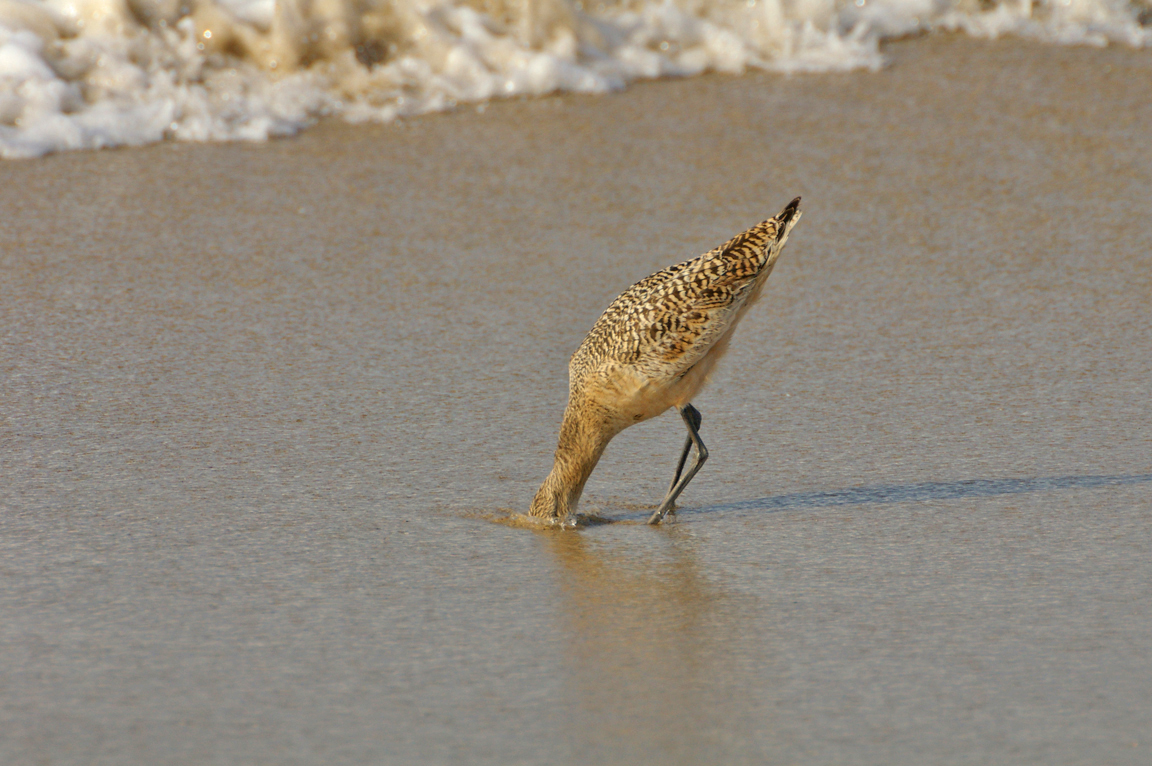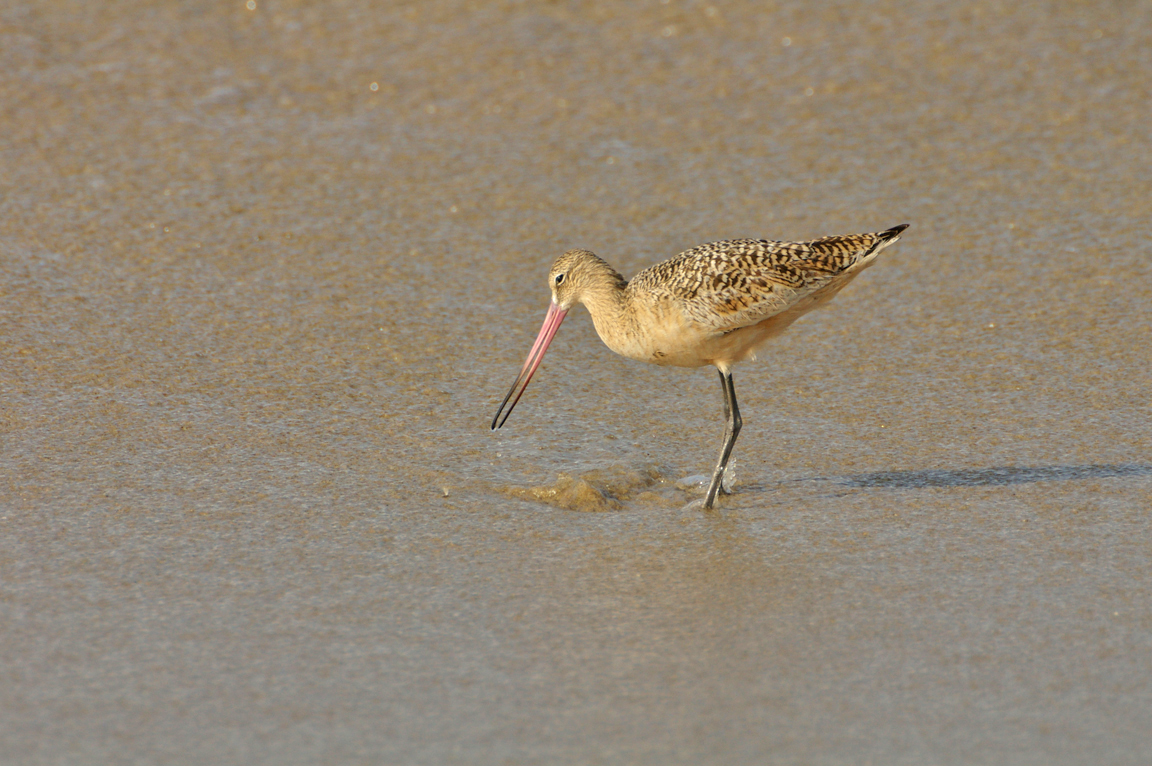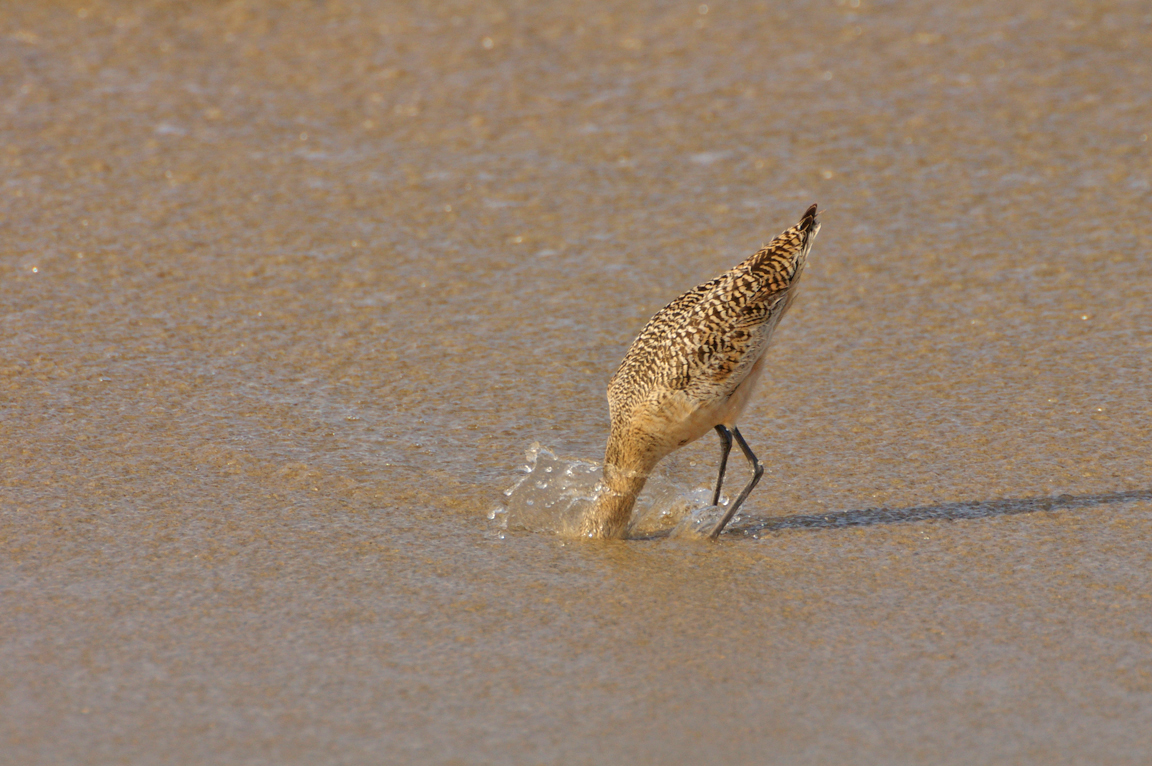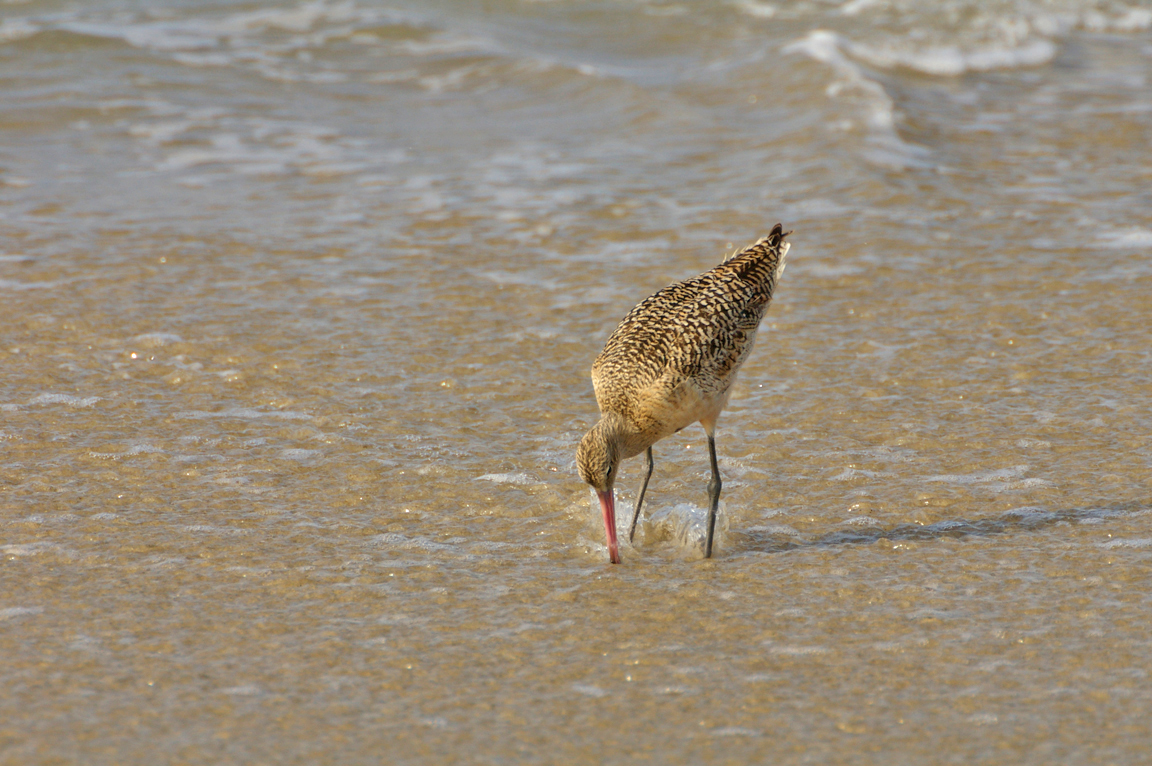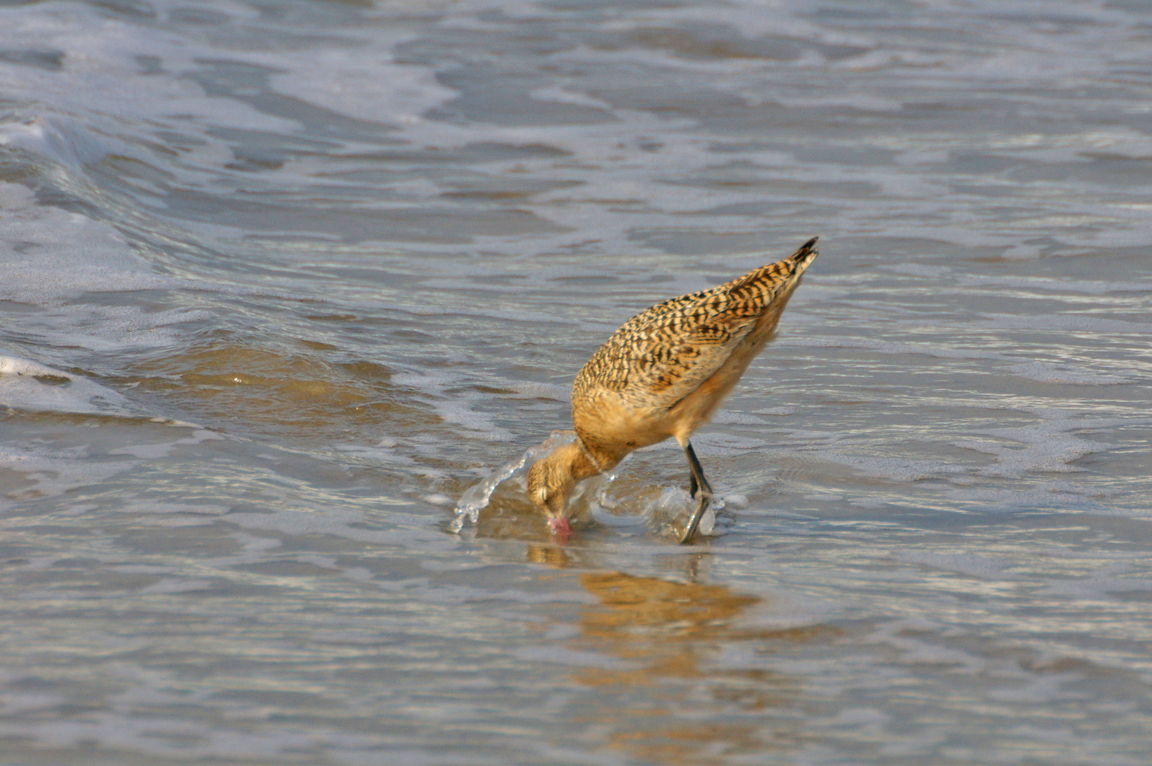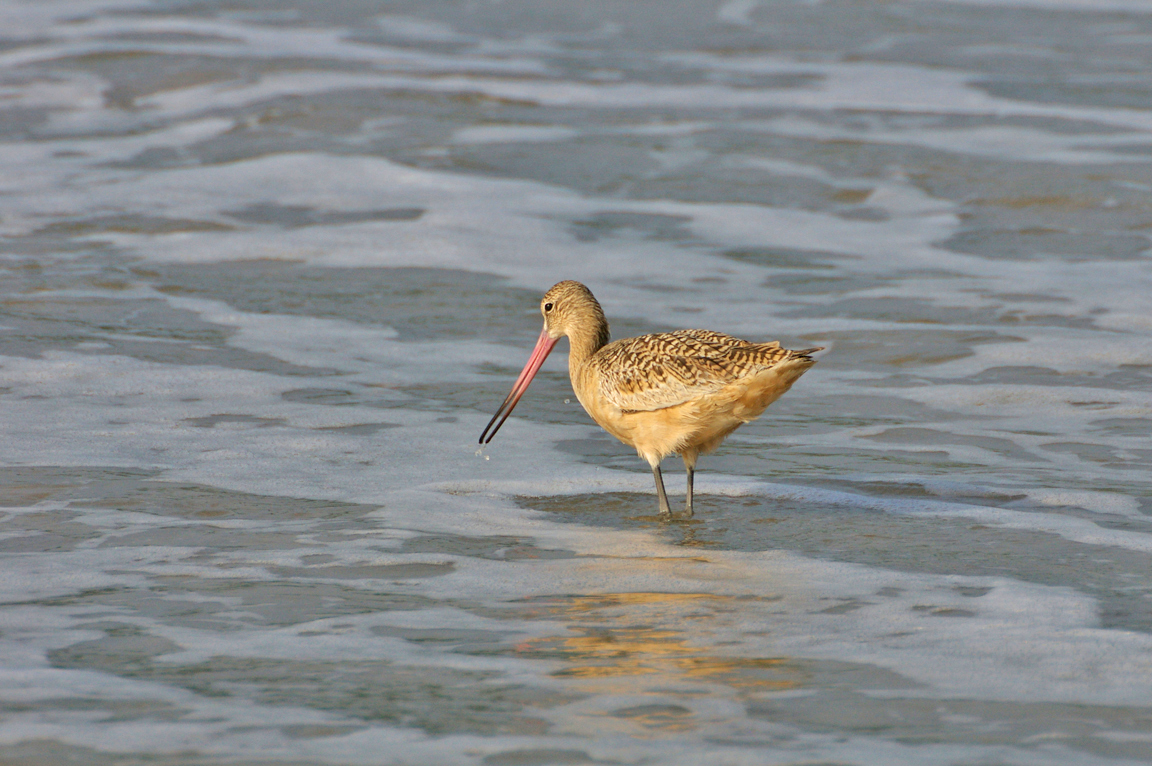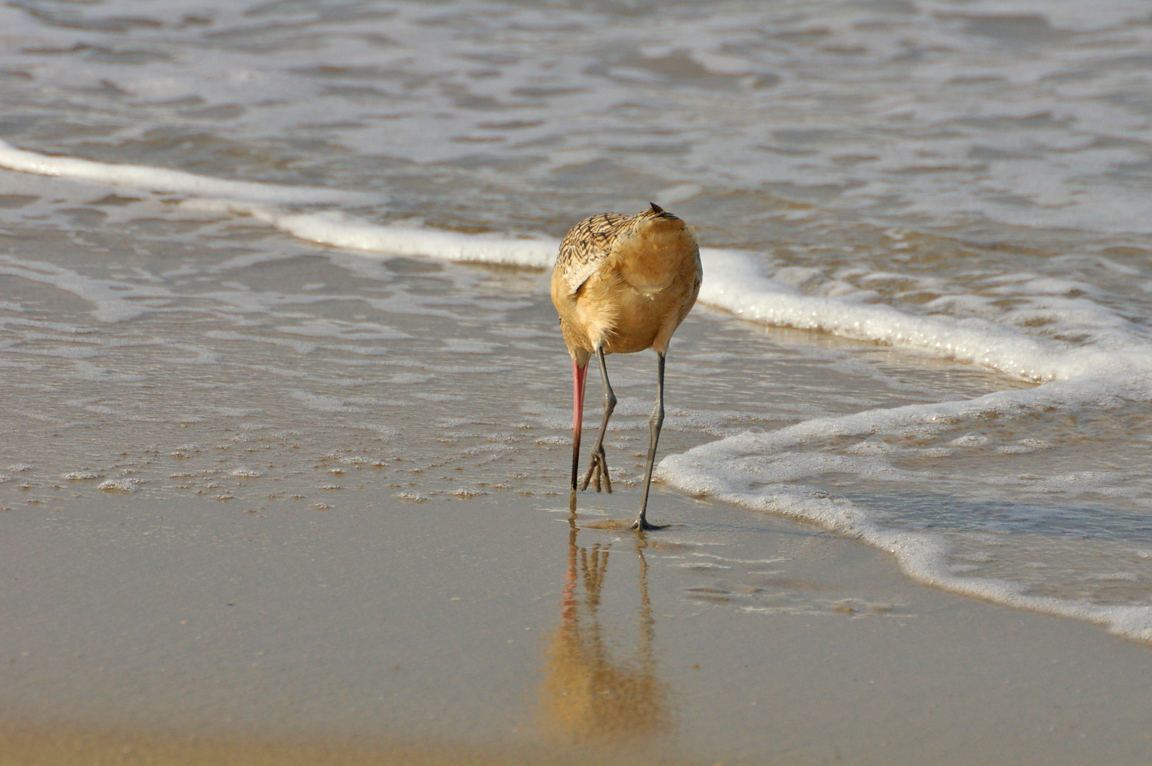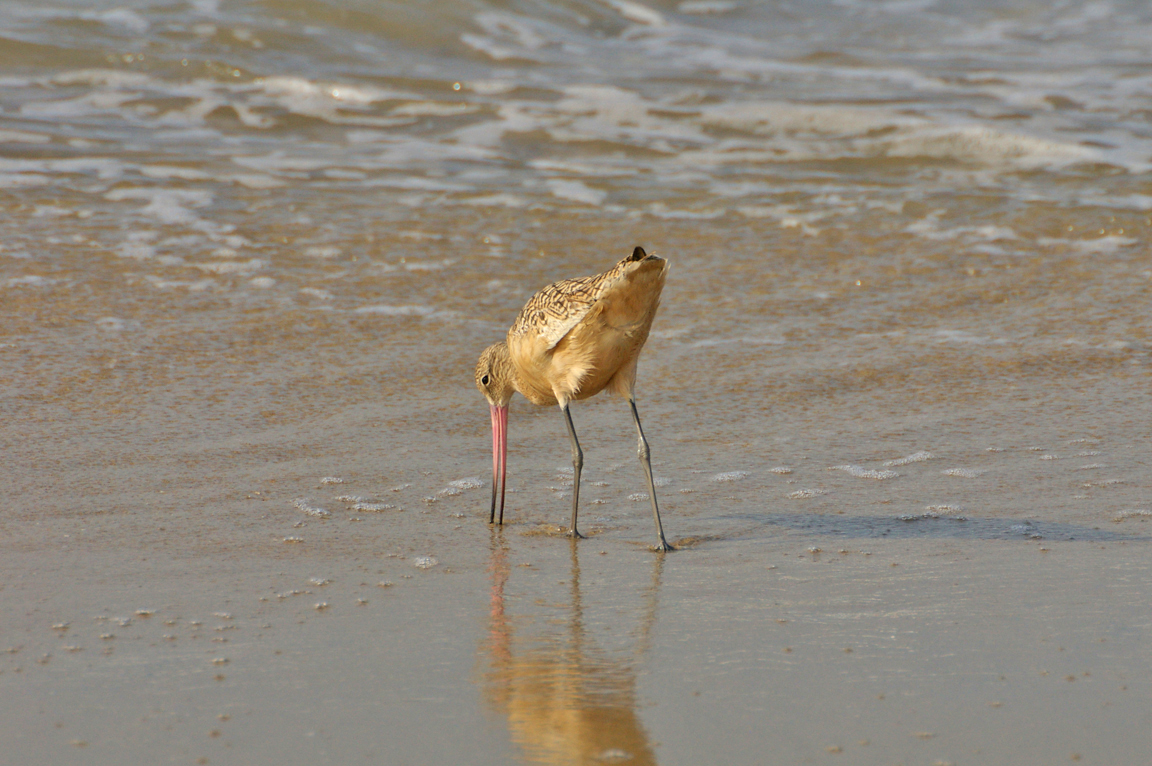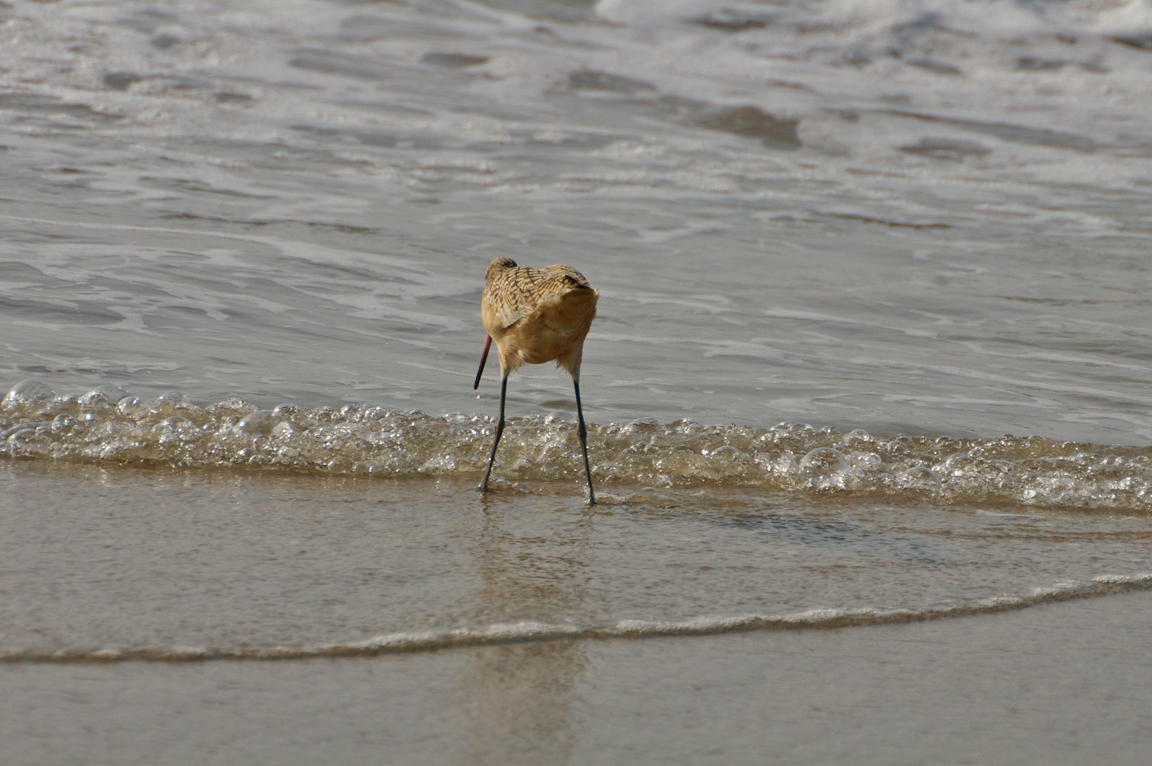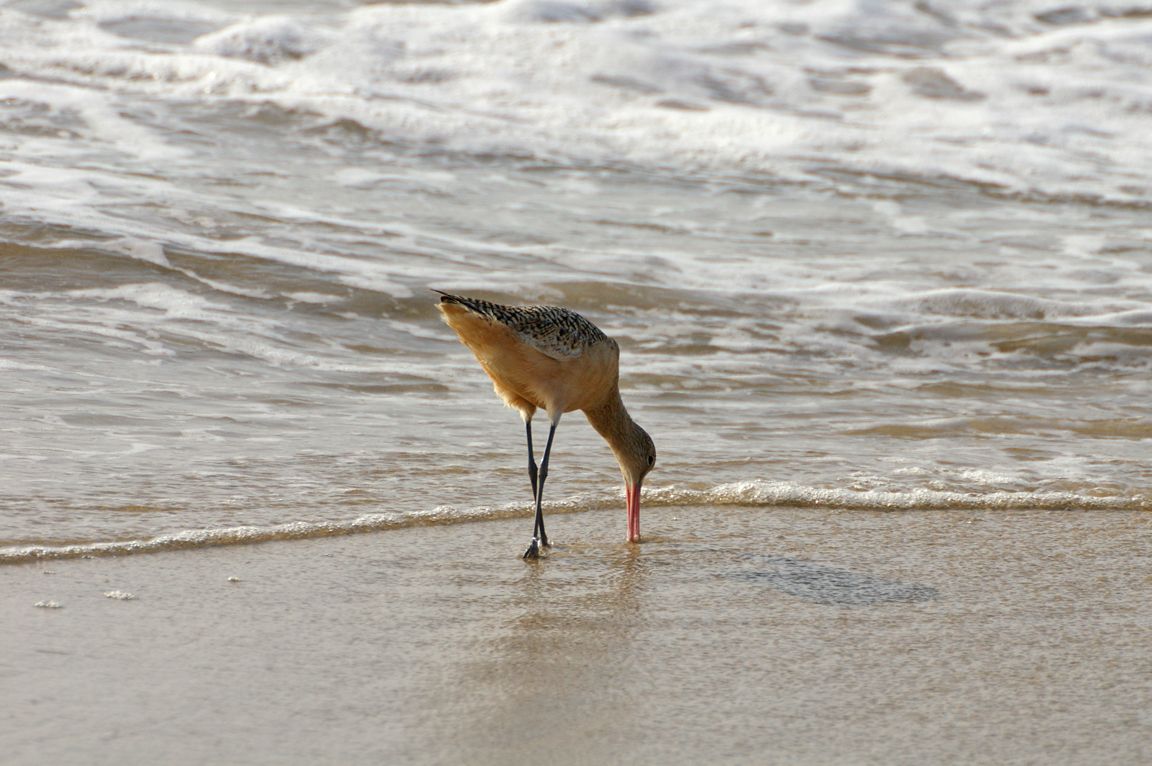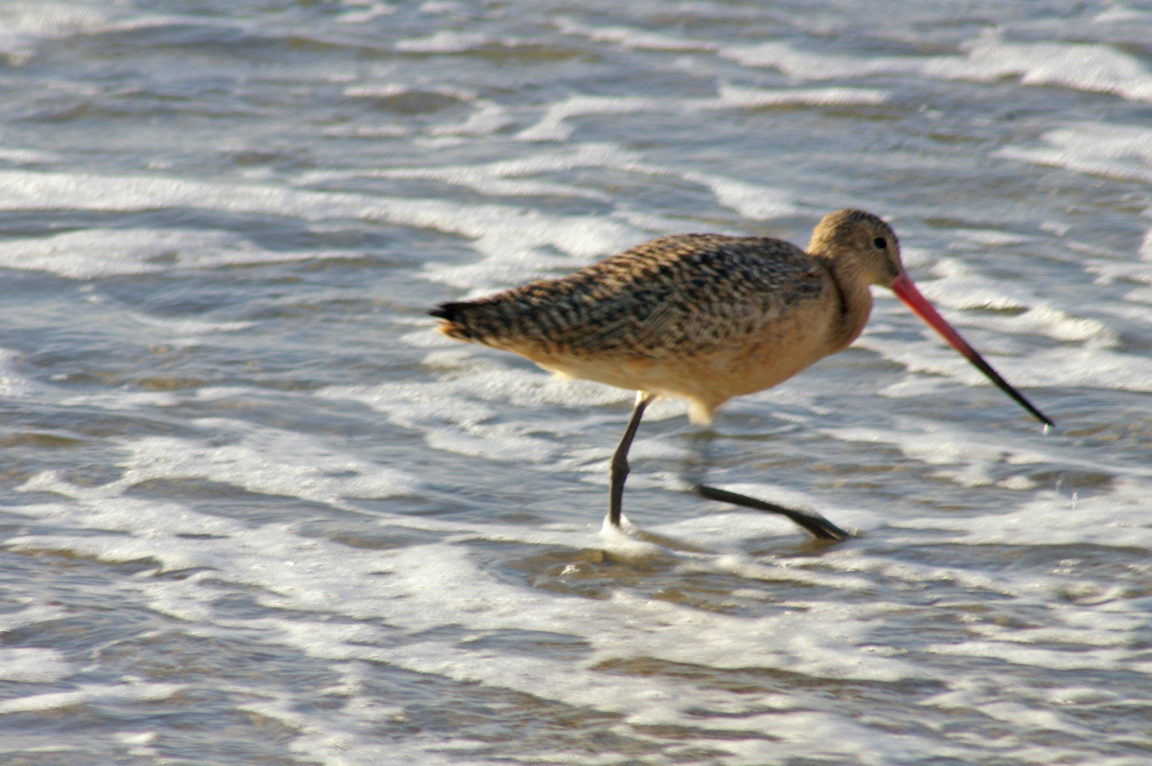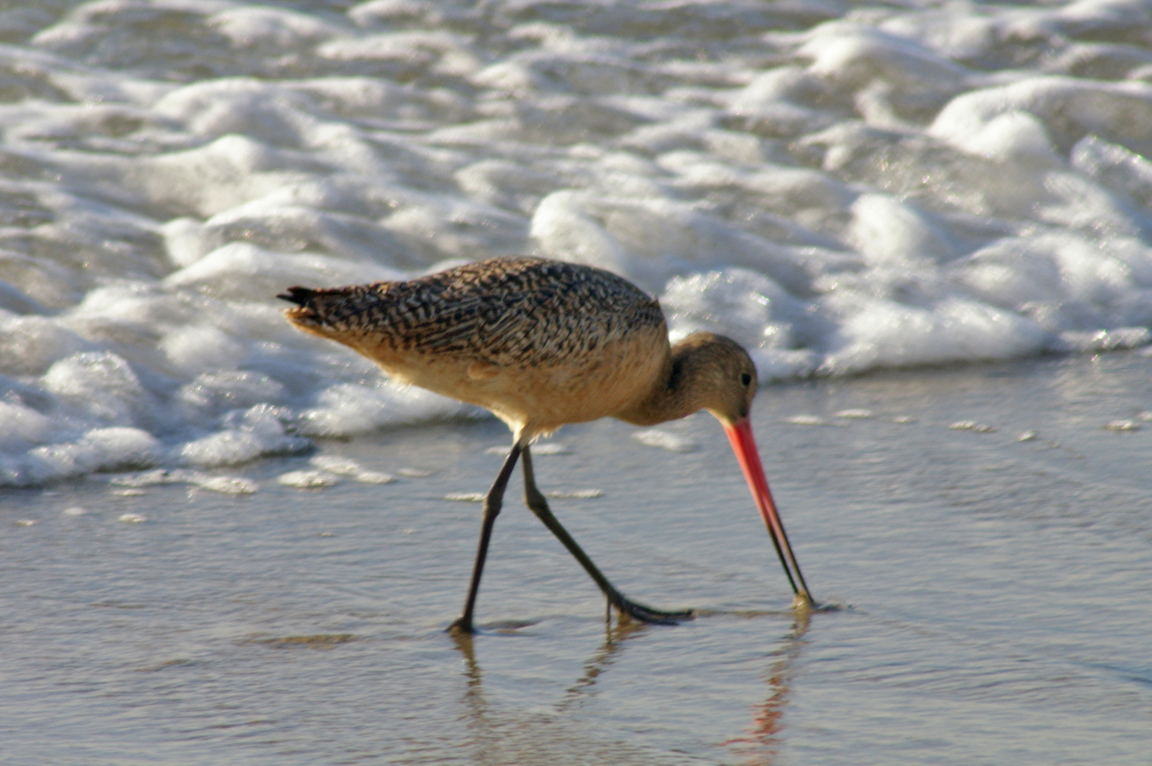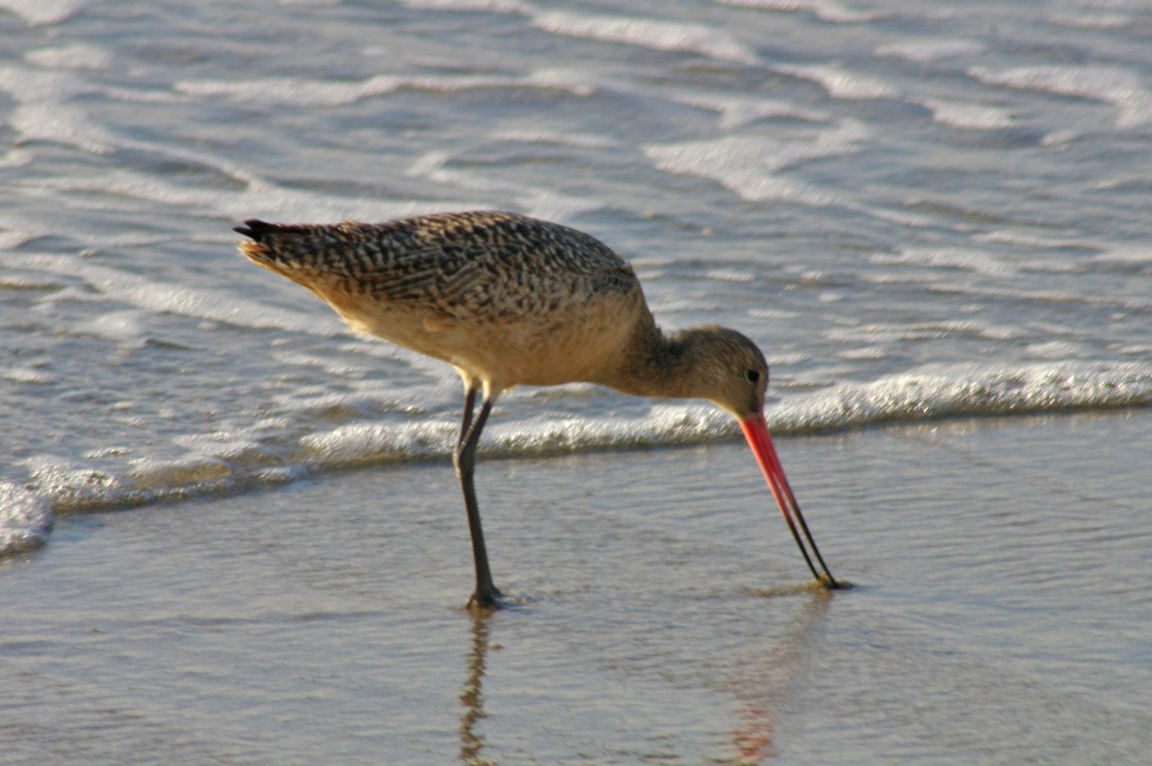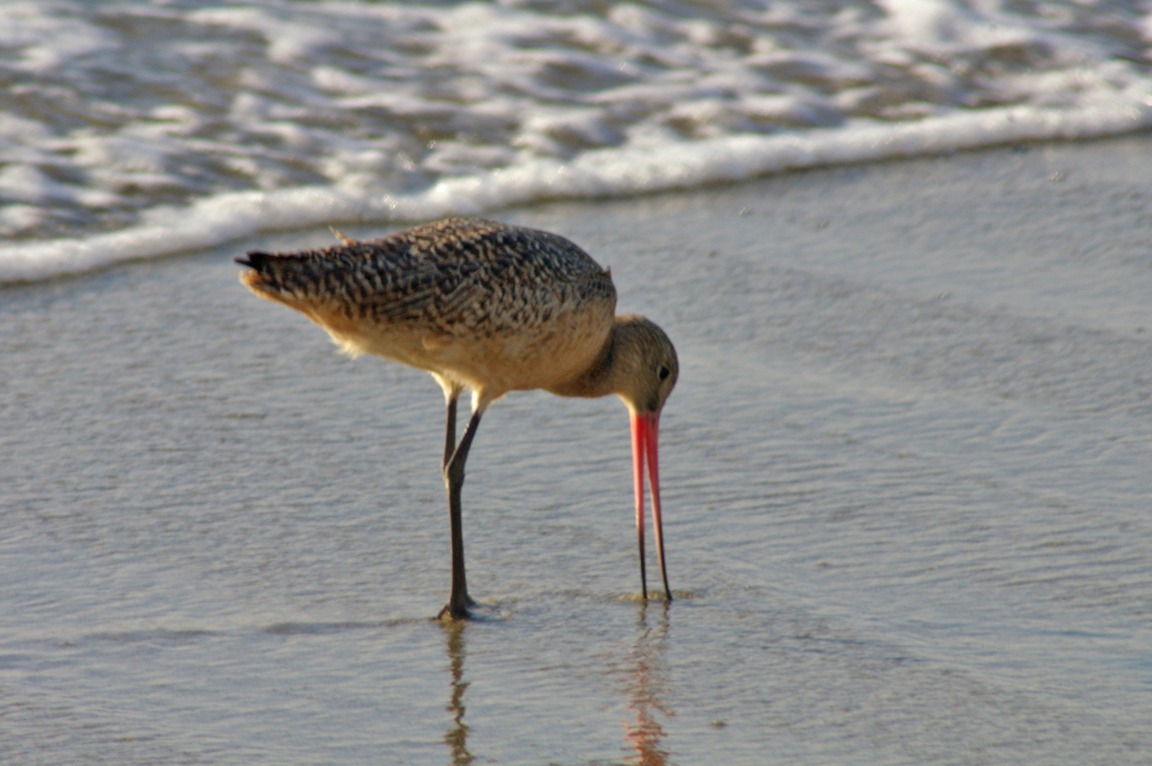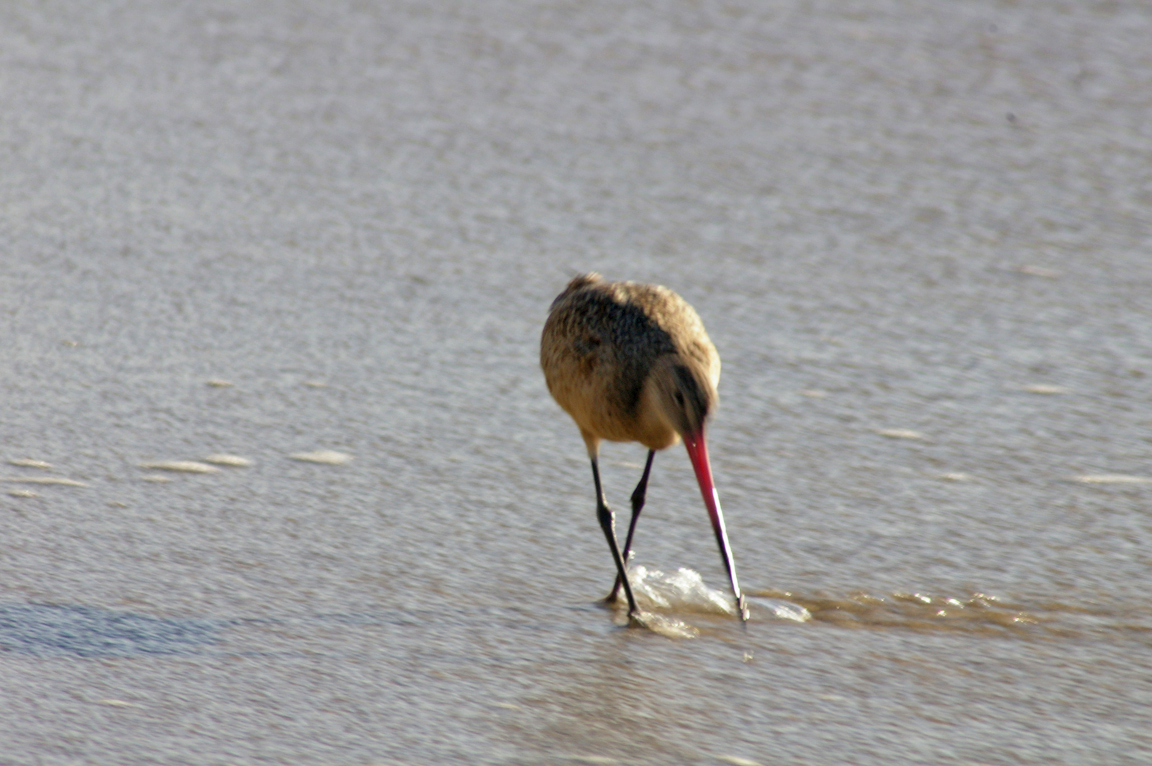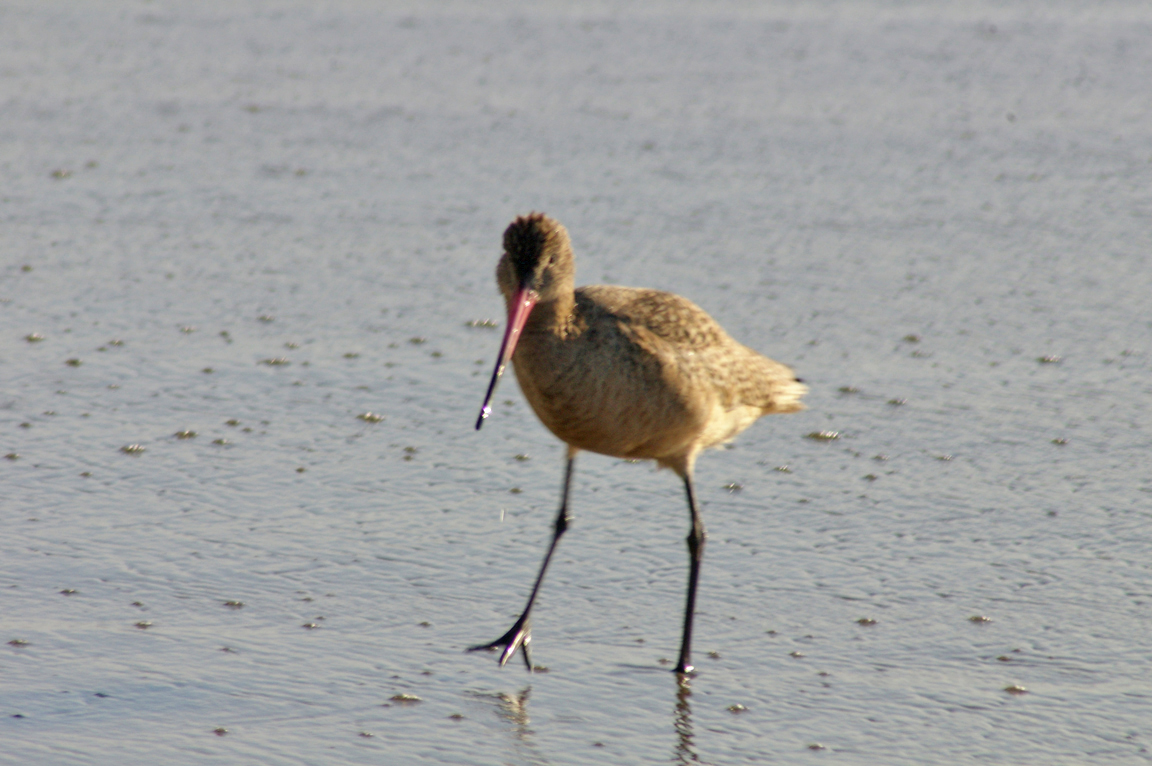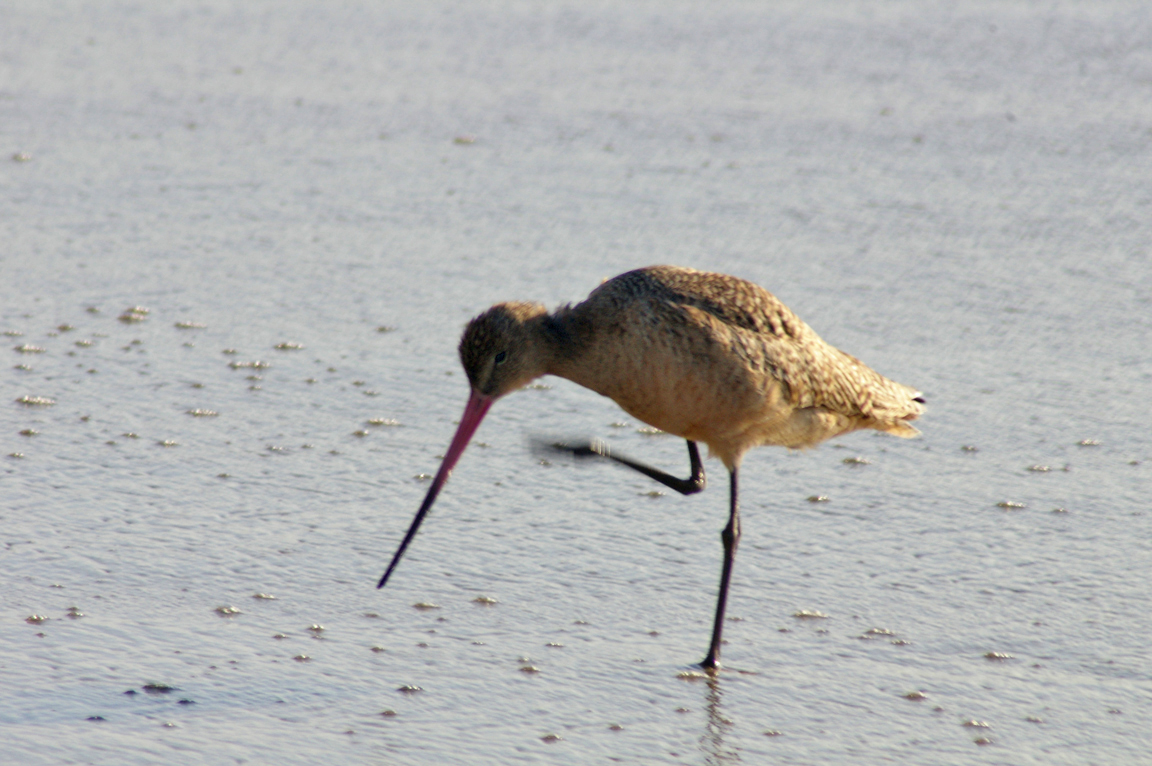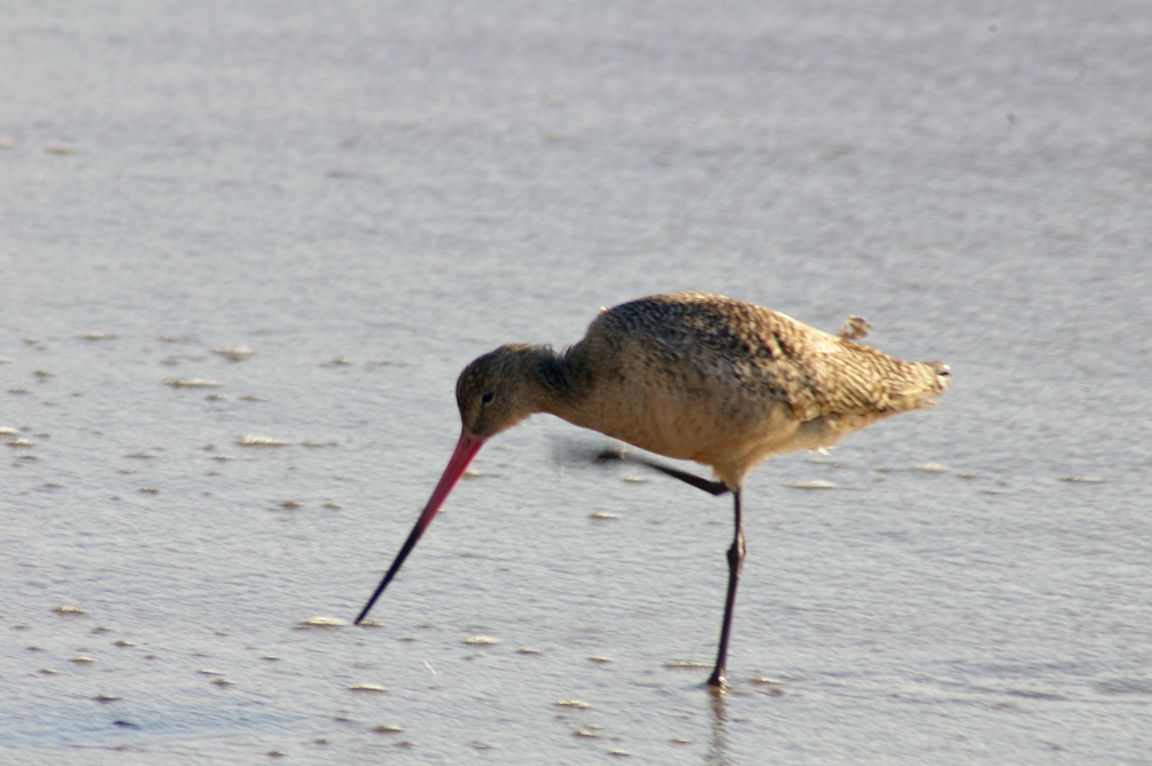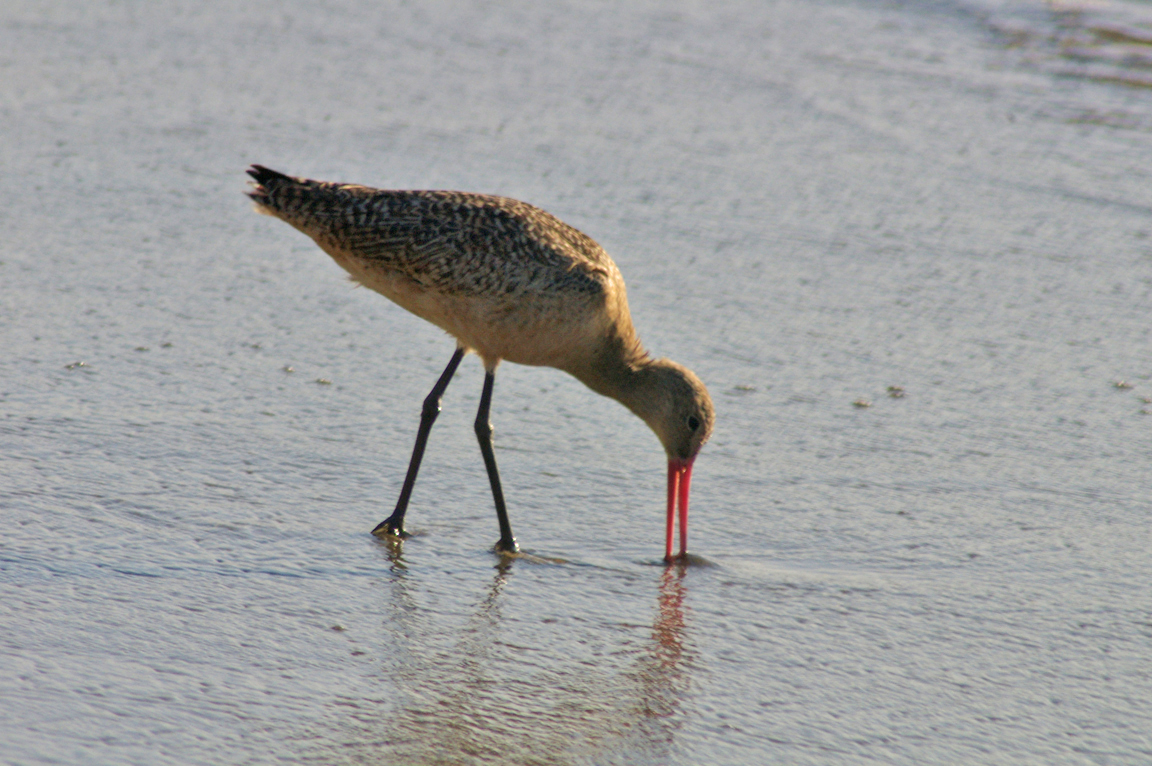|
|
|
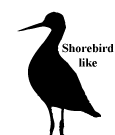 |
Marbled Godwit
|
| Limosa fedoa | |
A large shorebird with a long, upturned bill, the Marbled Godwit breeds in the center of the continent and winters along the coasts. It breeds in the northern prairies, amongst grasslands and scattered wetlands.
Interesting Information
-
Nests of the Marbled Godwit are not easily found, as these birds do not readily flush off of their eggs. Incubating adults can sometimes be picked up from the nest.
-
The Marbled Godwit was long regarded as showing no noticeable geographic variation until measurements of birds breeding in Alaska showed these populations to have shorter wings and legs than Great Plains godwits.
Description
Adult Description
-
Size: 42-48 cm (17-19 in)
-
Weight: 285-454 g (10.06-16.03 ounces)
Large shorebird. Long, slightly upturned bill with dark tip and pinkish base. Long legs. Rich buff-brown all over. Cinnamon wing linings. Orangish stripe in wings. Breeding plumage with barring across chest. Nonbreeding plumage with plain breast.
Sex Differences
Sexes similar, but male smaller and with brighter bill base and more extensive barring when breeding.
Immature
Juvenile similar to nonbreeding adult.
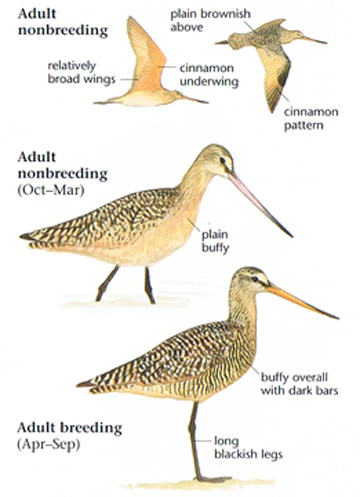
Photo taken from: The Sibley Field Guide by David Allen Sibley
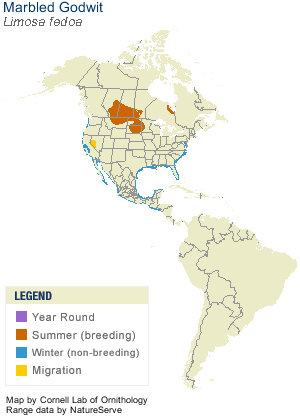
© 2003 Cornell Lab of Ornithology
|
Habitat |
|
Breeds in marshes and flooded plains, in migration and winter also on mudflats and beaches. |
|
Behavior |
|
Forages by probing on mudflats and in shallow water; also chases insects in shoreline vegetation. |
|
Food |
|
Eats worms, mollusks, crustaceans, and insects. |
Taxonomy
| Kingdom: | Animalia |
| Phylum: | Chordata |
| Subphylum: | Vertebrata |
| Class: | Aves |
| Order: | Charadriiformes |
| Family: | Scolopacidae |
| Genus: | Limosa |
| Species: | Limosa fedoa |
Similar Species |
|
|
Bird Sound |
|
Call nasal, slightly crowing or laughing "ah, ha" or "ahk." |
|
Eggs look like this |
|
Photo taken from: ARCTOS Collaborative Collection Management Solution |
